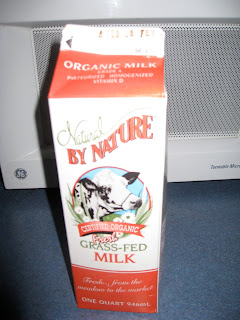So I decided to take matters into my own hands. My quest for a loaf began with a container of starter from a friend. This was a type of sour dough starter that my friend had kept going for some time. In fact, she was quite grateful when I shared my desire to bake because her oven had stopped working and she was starting a kitchen renovation and well, she had a lot of starter with no place to go. You see, starter can live happily in your refrigerator for a week but then it needs to be fed. Feeding increases its size and before you know it, your life is Full of starter.
Using her starter, I made white loaf after white loaf. I practiced shaping techniques (learned to make a boule and continue to struggle with a baguette) and oven techniques. But there is only so much white bread you can eat before your system starts to complain, so I started doing things a "little different," as my Uncle Vinny used to say. I experimented with whole grains, oatmeal, flax meal, cranberries, walnuts, and olives. There were many disasters but also a lot of successes. And then one day, I baked all of my friend's starter. It was a bold move, but I felt ready for the next step: Starting my own. My friend looked at me as if I were nuts. "Why do that? My fridge is full. Take it, I can't bring myself to kill it." And then she came over and left me with, oh, six pounds of starter and a bottle of wine.
It took a week of nurturing but I did what Michael Pollan did for his famous local feast, I built a starter from wild yeast. How cool is that? When I first saw signs of life I was blown over. I nurtured the seeds (one white, one whole wheat) until they grew into mothers. I used every ounce of the seed to create these mothers--afraid that if I left any it wouldn't work. Unfortunately, it takes very little starter to make a loaf of bread. Worried that our home would be consumed by these bubbling, gassy mothers I can't stop baking. Yesterday I made eight loaves and prepped for 17 more that I'm baking today. The featured loaves are white and wheat pain au levain. Half of all the loaves were made without any commercial yeast. I am thoroughly enjoying myself. I feel part scientist and part artisan.














































